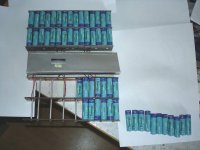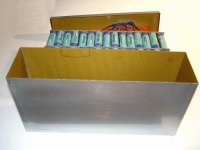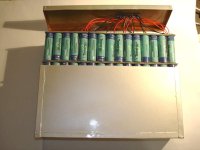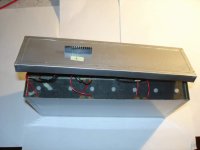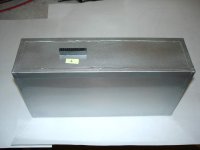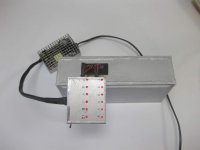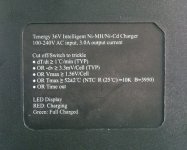So its a rainy day and and I can't go biking so I'm looking at my batteries debating what to do with them. Since I have the time I'll explain in a little more detail about what my goals are.

Here's the current setup. 36v, 2808 9C, infineon 40A controller. I've been charging these batteries for the last 2 weeks using a homemade charger made from three 12v 1A wall wart transformers hooked in series, and then trying to balance each individual 12V pack with a light duty automotive trickle charger. So far this method has worked mediocre. I'll get about 5-10 miles of range with pedal assist and then one of the packs will drop to 10V while the others are still hanging in the 12v range. I'm eventually going to bump the voltage up to 72v but I want to add more batteries in parallel first because the current draw would be too much for the batteries.
View attachment 4
Here's an individual cell from tenergy's website.
http://www.tenergy.com/10514
Features and Benefits
-High quality Sc size, 5000 mAh Nickel metal hydride (Ni-MH) battery.
-Up to 30 Amps high drain current rate, ideal for making various battery packs for heavy duty applications such as remote control (RC) toys, electrical guns, power tools and backups.
-Solderable taps enable cost effective and easy way to make your own power pack of different voltage and shape.
-Each cell is individually checked before shipping and all the batteries are matched.
-Ultra high capacity, 40% more running time than Ni-Cd Sc battery.
-Very long cycle life and Rapid battery charge up
-Significant savings (60 % or more) from any retail stores.
-Battery tested based on International Electronic Commission (IEC) standard to ensure capacity, quality and life time 6
6 months warranty.
Technical Specifications
-Dimension: Height 43 mm, Diameter 23 mm
-Weight: 71g per cell
-Capacity: Min: 4600 mAh
-Voltage: 1.2V
-Single Cell Resistance <=5 Mili Ohm
-Standard charge 0.1C × 16 hrs
-Rapid charge 0.5C×2.1hrs approx
-Standard Discharge .2C
The Tenergy website is kind of vague on the details of this cell. Also they say that rapid charge is rated at 1C which would be 5A but other sites say .5C or 2.5A.
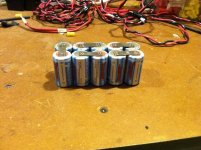
Here's what the batteries look like with the shrink wrap off. They are 10 cells in series for a nominal 12V. I have no idea how much current those tabs are rated for but they are stacked 2 high. (These are not the tabs that can be ordered with the cells. A battery shop assembled these.)

Here's my current Battery rack. It's 2 strings of 30 cells that get hooked up in parallel. (36V 10Ah) I plan on keeping this and putting these packs in series once I go to 72V.
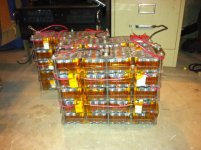
Finally, here's the rest of the batteries I have and I plan on incorporating a good amount of these into the bikes main triangle. I would like at least 3 strings of 72V which would give me a batery pack thats a little over 1kWh. I have 3 of these battery modules (pictured) and they each contain 240 cells arranged in a 80S3P (96v, 15Ah) config. They also have a center tap in the middle (small red wire) so that they could be charged using dual 48v chargers. Unfortunately, all of these cells have all been tab welded together and were welded in
parallel first and then series! This makes them impossible to break the strings apart by simply snipping wires/tabs. The vehicle these came off of has had problems with cells overheating and bursting in the past. I would guess that having all the batteries hardwired and charging in parallel may have something to do with that...
 http://www.tenergy.com/01016
http://www.tenergy.com/01016
I recently just purchased 2 of these NiMH smart chargers and they should be arriving any day in the mail. They charge at 3A which I think would be perfect for charging a 15Ah pack (3 strings simultaneously). Now I know this cannot be done with conventional methods, hence the reason I'm looking for a solution using some clever circuitry. *Ideally I want a robust system so that I can charge
all the cells at once at a low C rate and be able to charge from empty to full overnight without risking any fire hazards. I think I may be chasing after a goal that is unattainable, and if I have to charge 1 string at a time and then manually disconnect and reconnect the next string then so be it. I guess I'm just lazy and want to be able to charge as simple as possible :wink:
Also, the strategy of charging in parallel at C/10 has been brought up. This seemed like a good idea until I came across another members post (Jeremy Harris I think?) who was doing this and woke up to the sound of his NiMH cells exploding



